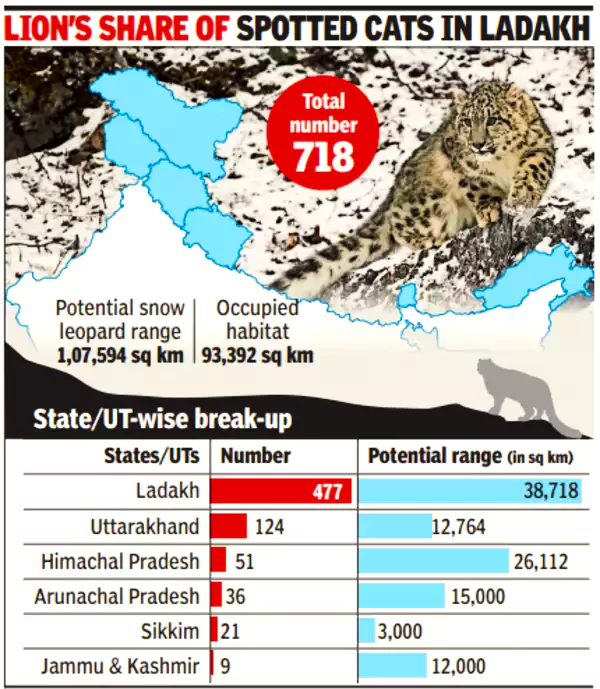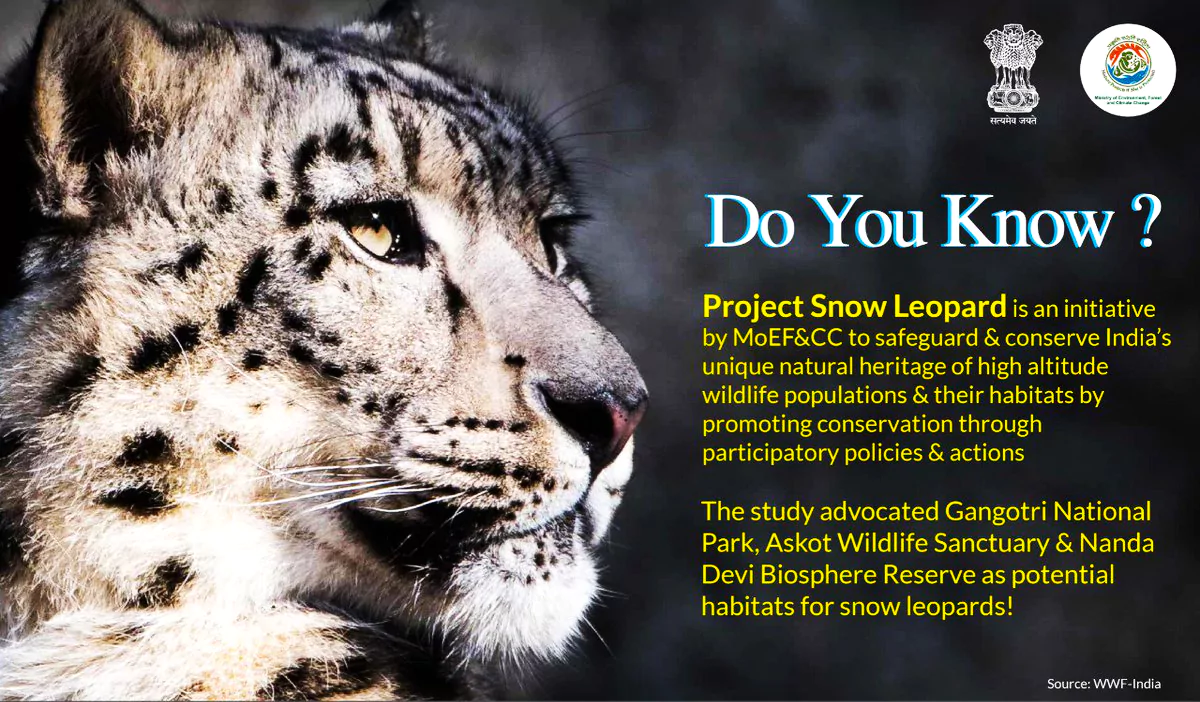![]() 31 Jan 2024
31 Jan 2024
The first scientific survey of the Snow leopard in India shows the country is home to 718 of the elusive cats.

 Threats: Habitat destruction, invasive species, climate change, and pollution, which collectively exert an unprecedented impact on their survival.
Threats: Habitat destruction, invasive species, climate change, and pollution, which collectively exert an unprecedented impact on their survival. Lesser Known Facts About Snow Leopard
|
|---|
News Source: The Hindu
| Must Read | |
| NCERT Notes For UPSC | UPSC Daily Current Affairs |
| UPSC Blogs | UPSC Daily Editorials |
| Daily Current Affairs Quiz | Daily Main Answer Writing |
| UPSC Mains Previous Year Papers | UPSC Test Series 2024 |
<div class="new-fform">
</div>